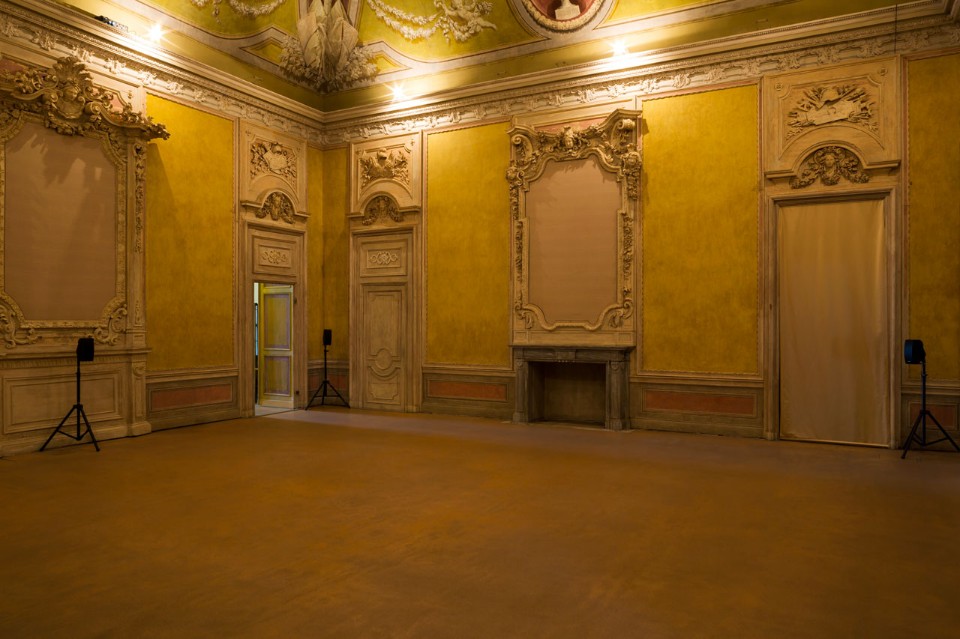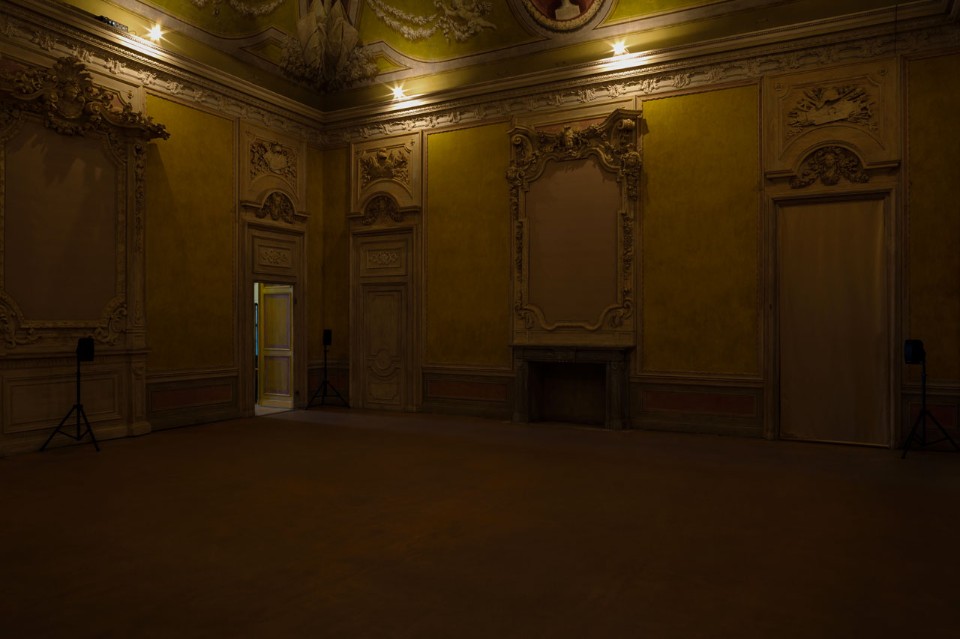
Uriel Orlow, a Swiss artist based in London whose fine exhibition is on at the Castello di Rivoli, has always focused on this subject with his rigorous and concise but all-enveloping work that brings great clarity to prominent issues and generates emotionally charged situations. His broad-ranging projects address the link binding present/future to an unresolved past, without yielding to the temptation to lessen or simplify this complex theme.
In his debut work, 1942 (Poznan), the interiors of a public swimming pool are slowly revealed for what they had been until 1942: an old synagogue. The video is presented at the end of an exhibition route rigorously designed but packed with content.
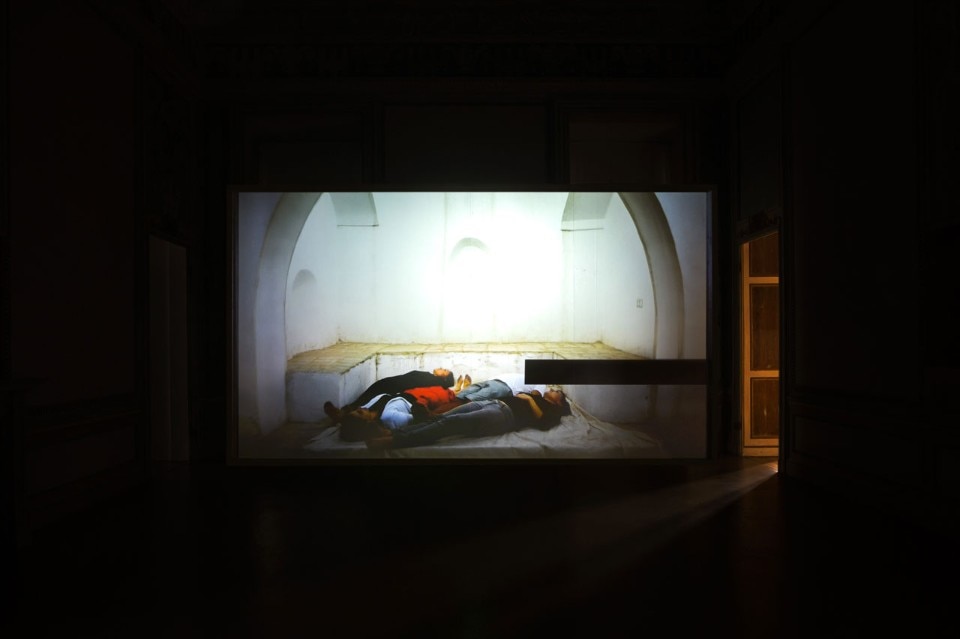
The exhibition begins with Unmade Film, a project for a film narrating a forgotten story, in turn, left unfinished. Uriel Orlow developed its essential components but never brought them together in an organic whole. Instead, they are displayed as audio-visual installations, works on paper and photographs.
Unmade Film was inspired by a story involving the Palestinian village of Deir Yassin, close to Jerusalem, and the Kafr Sha’ul psychiatric hospital, originally given over to treating the traumas of Holocaust survivors. Today, it specialises in Jerusalem Syndrome, forms of psychosis that mainly affect tourists to the area and are manifested in the form of religious obsession.
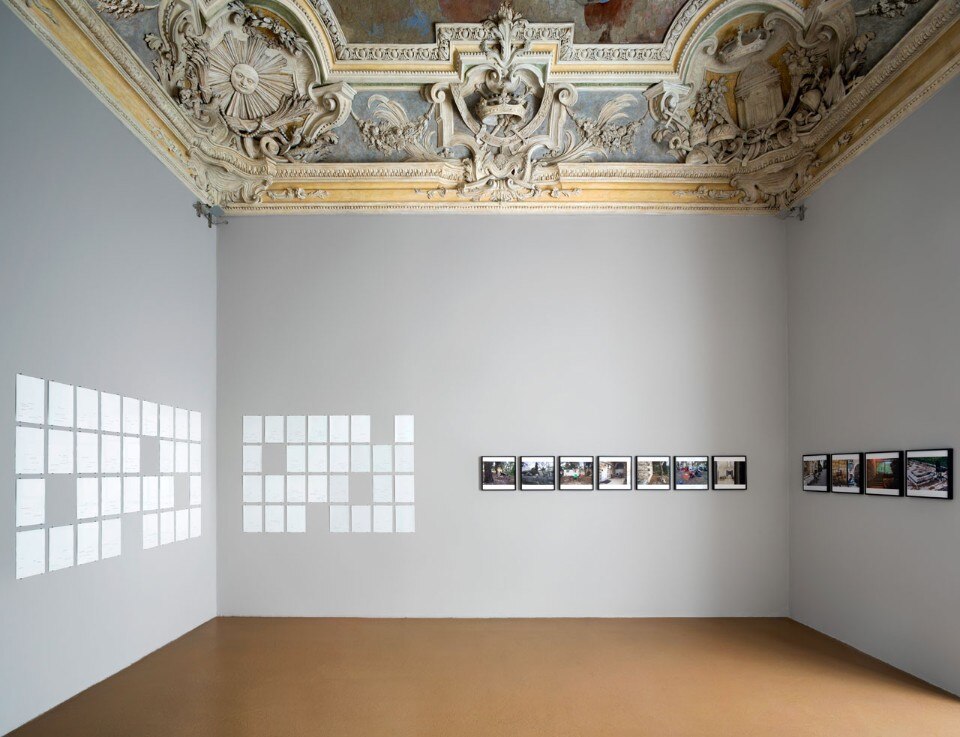
Having visited a relative in the hospital from childhood, Orlow realised it was the same place and that many of the buildings of the hospital, founded in 1950, are what remains of the houses of the original Palestinian inhabitants of the village of Deir Yassin.
Emerging slowly bit by bit, the story of this absurd build-up of pain binding peoples and generations has to be told but is too complex for linear and direct development and would lose its essence in film form. In Orlow’s work, it develops as a whole constituting the elements normally produced when making a film; the artist does not, however, unite them in a single sequence, he presents them isolated and separate from each other. There is the opening title – a neon stating: The Future is History / History is the Future; the reconnaissance, the script, the narrating voice, the mise en scene, the score and the closing credits.
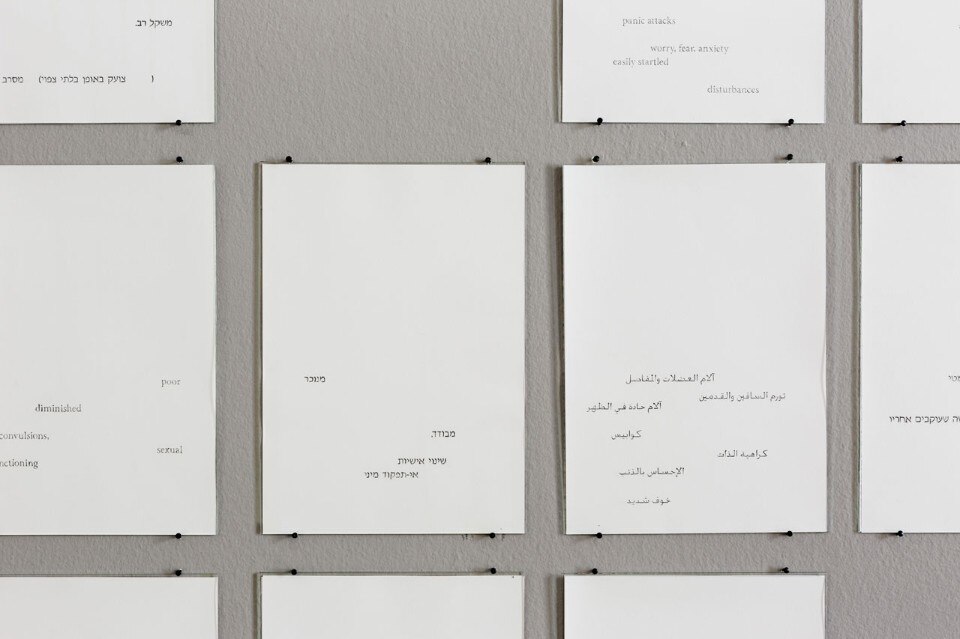
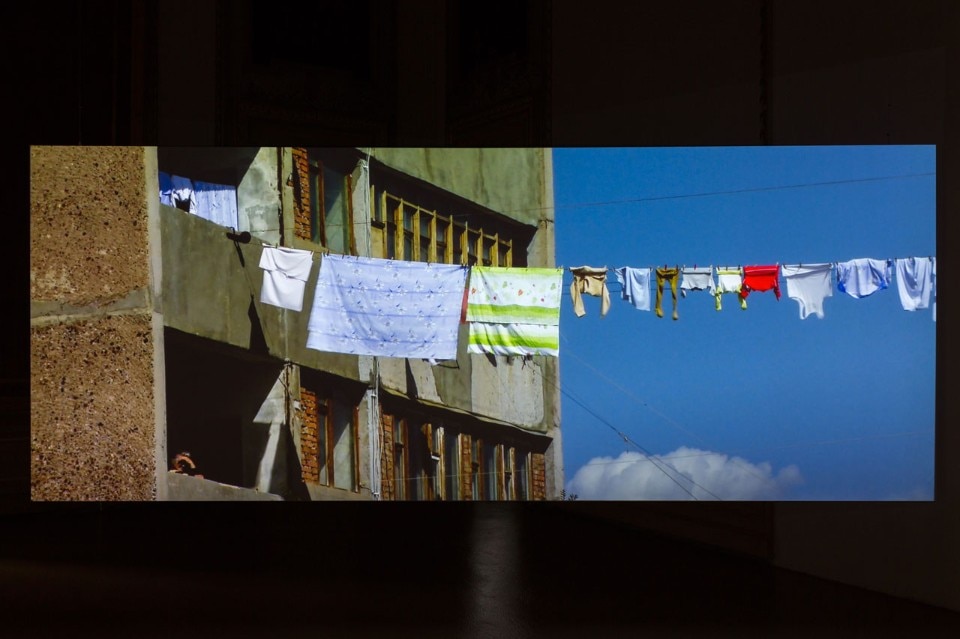
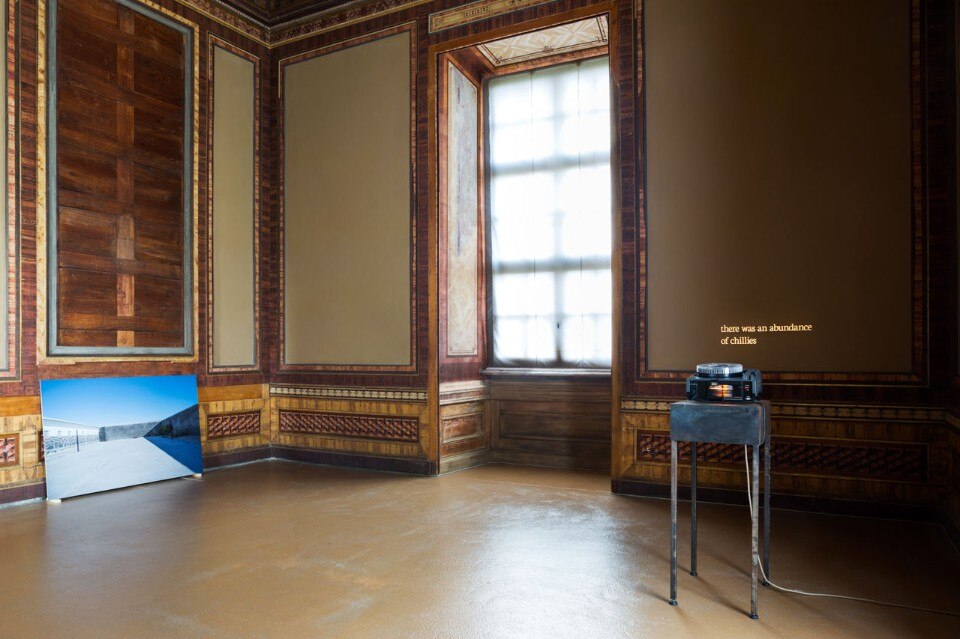
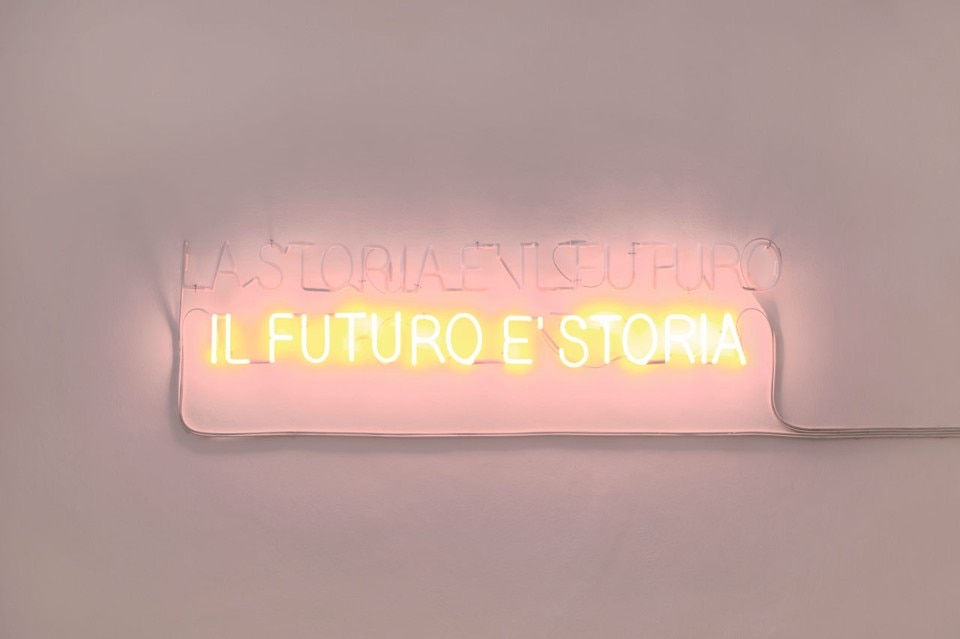
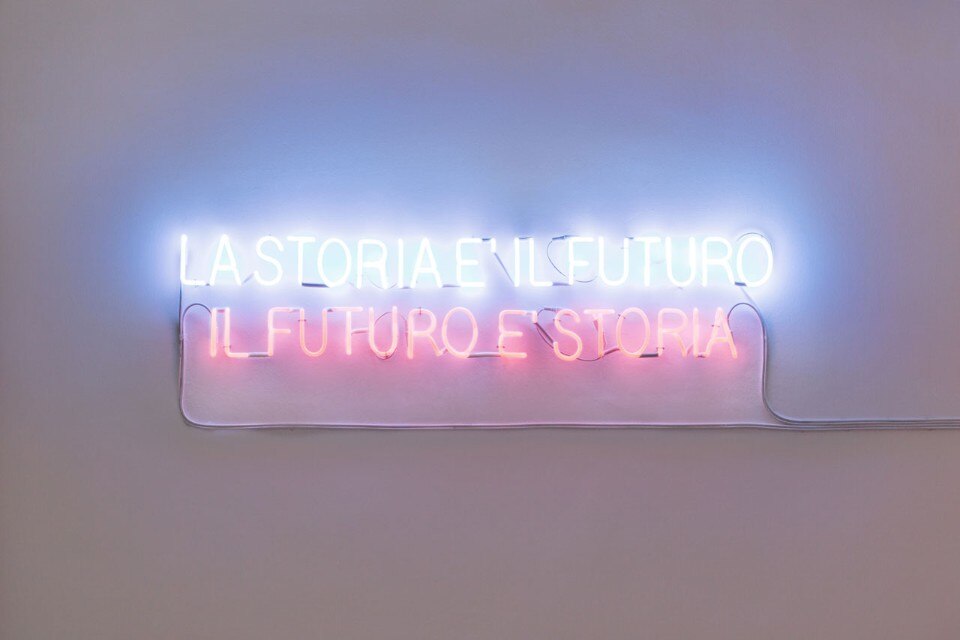
until 11 October 2015
Uriel Orlow: Made / Unmade
Curated by Marcella Beccaria
Castello di Rivoli Museo d’Arte Contemporanea


